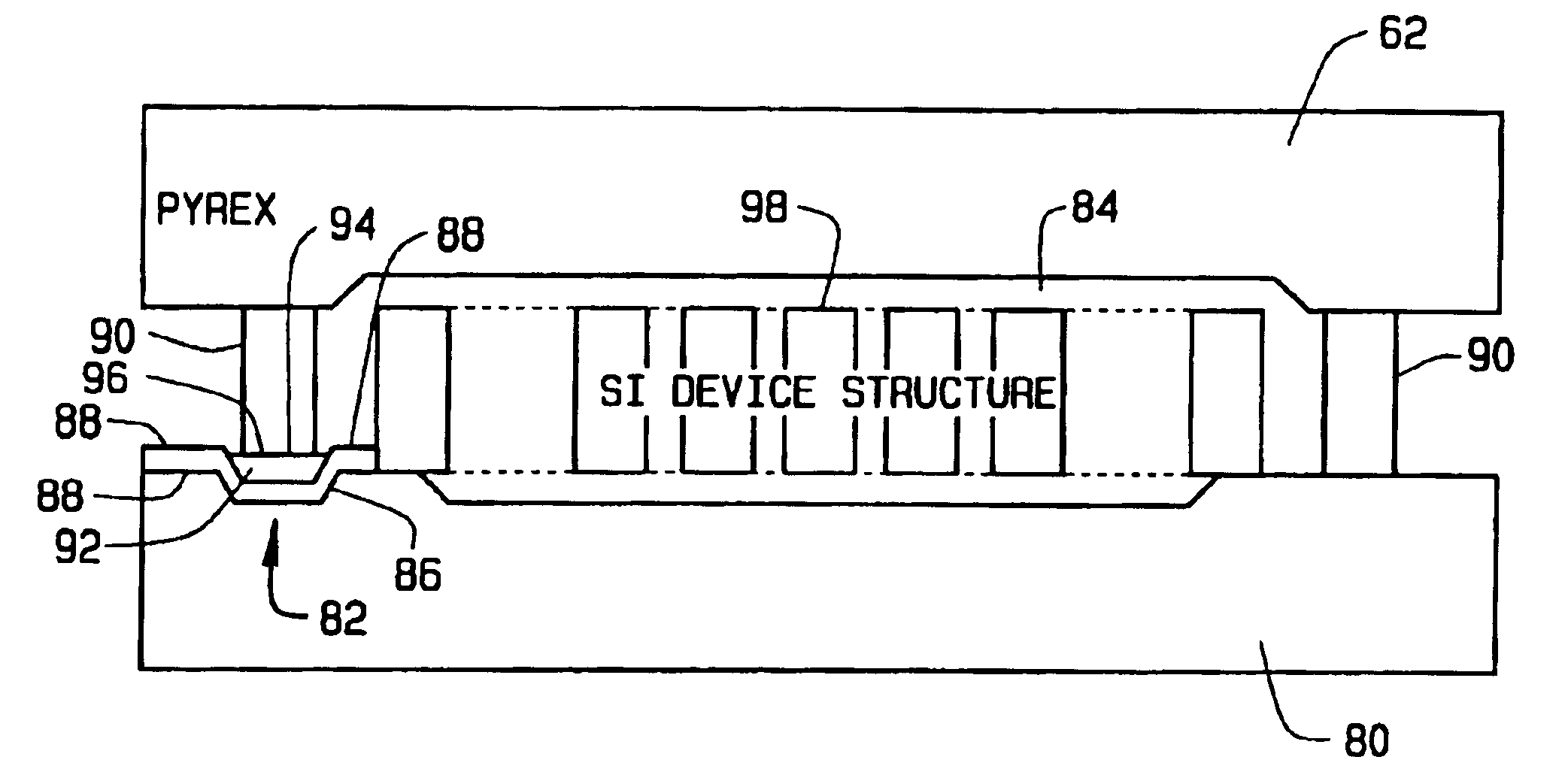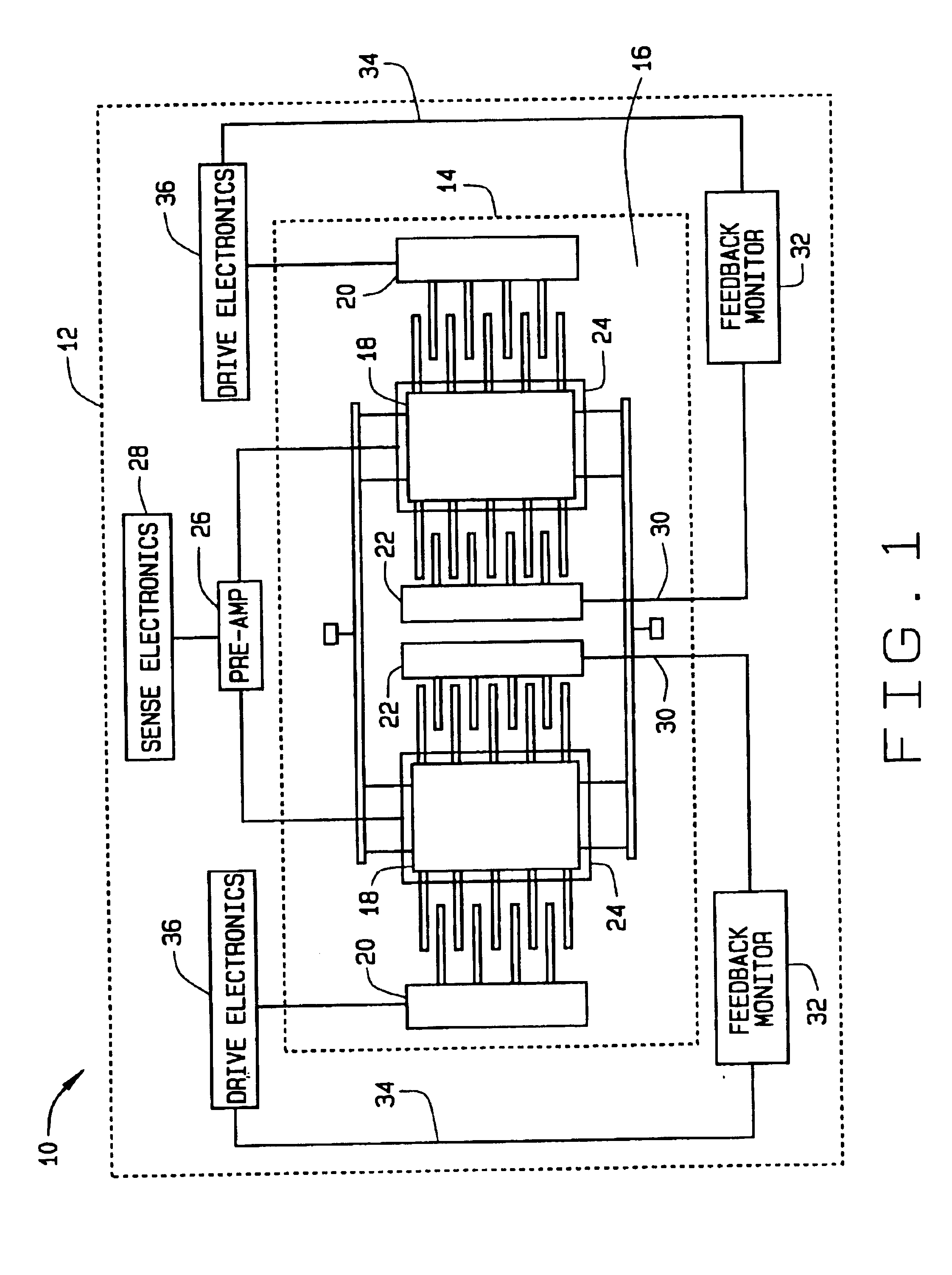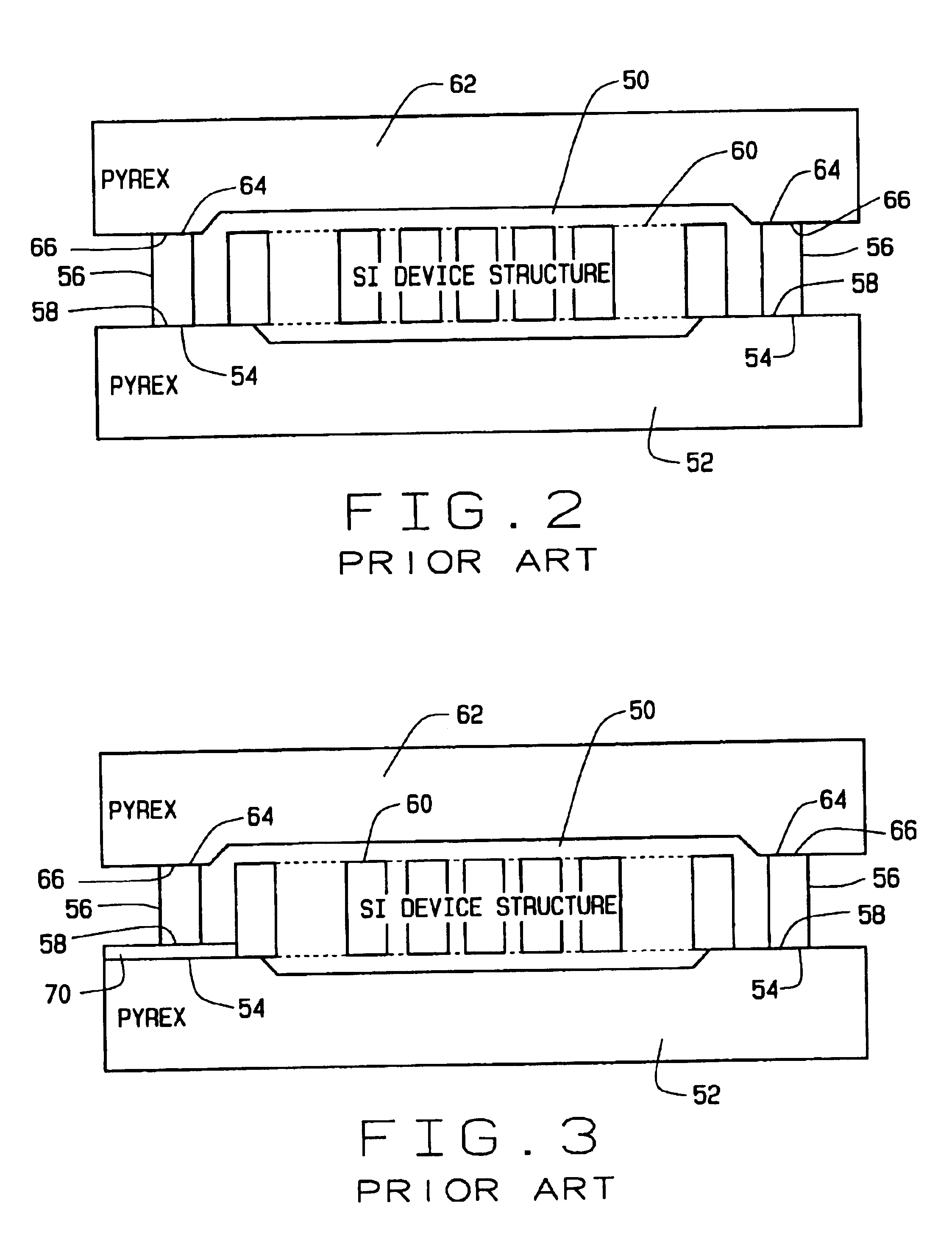Systems for buried electrical feedthroughs in a glass-silicon MEMS process
- Summary
- Abstract
- Description
- Claims
- Application Information
AI Technical Summary
Problems solved by technology
Method used
Image
Examples
Embodiment Construction
[0022]FIG. 1 is a schematic illustration of a micro electromechanical system (MEMS) gyroscope 10. MEMS gyroscope 10 may include a housing 12 that includes therein a tuning fork gyroscope (TFG) 14. Housing 12 may be a plastic package, a small outline integrated circuit (SOIC) package, a plastic leadless chip carrier (LCC) package, a quad flat package (QFP), or other housings as known in the art. Housing 12 may provide a structure to co-locate elements of TFG 14 and / or locate other elements within a close proximity of one another within the housing 12. TFG 14, in one embodiment, is located within a substantially sealed cavity 16 which is formed by bonding silicon to a glass substrate. Substantially sealed cavity 16 provides separation between sensitive elements of TFG 14 and drive electronics, described below.
[0023]In one embodiment, TFG 14 may include proof masses 18, motor drive combs 20, motor pickoff combs 22, and sense plates 24. A pre-amplifier 26 may be included within housing ...
PUM
 Login to view more
Login to view more Abstract
Description
Claims
Application Information
 Login to view more
Login to view more - R&D Engineer
- R&D Manager
- IP Professional
- Industry Leading Data Capabilities
- Powerful AI technology
- Patent DNA Extraction
Browse by: Latest US Patents, China's latest patents, Technical Efficacy Thesaurus, Application Domain, Technology Topic.
© 2024 PatSnap. All rights reserved.Legal|Privacy policy|Modern Slavery Act Transparency Statement|Sitemap



